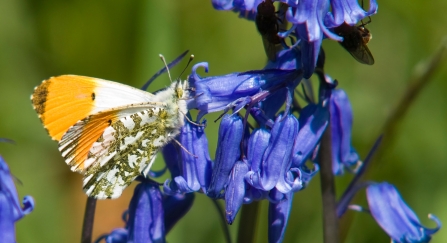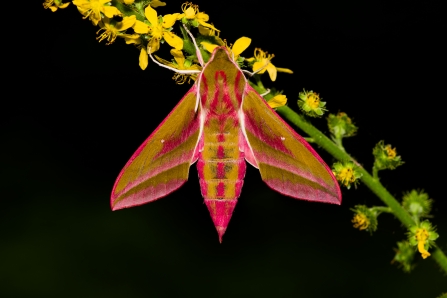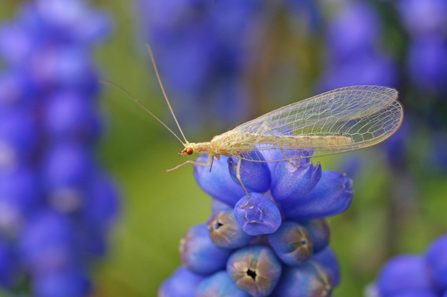Dancing, serenades, pheromones and even gifts are exchanged in the hopes of wooing a potential partner and continuing their gene pool.
Let's take a look at some of the weird and wonderful ways that insects like to show their affection.
Large white butterflies are fond of lavender. Image by Megan Lowe
Dancing, serenades, pheromones and even gifts are exchanged in the hopes of wooing a potential partner and continuing their gene pool.
Let's take a look at some of the weird and wonderful ways that insects like to show their affection.

Bob Coyle
In the case of butterflies, it’s all about showing off. Those bright colours and beautiful patterns are all ways of signalling that they are looking for love. The variation in colour and pattern allows the different species to be distinguished from one another and also helps the butterflies differentiate between males and females.
When a male recognises a female of his own species he quickly pursues her and begins his courtship ritual – dancing. In many species, the female demands to see the males dance moves before he can come any closer. One false move could be the difference between a hot date and a microwave meal for one.

Elephant hawkmoth by Donald Sutherland
Flying by night, you could say that moths are pretty into the blind-dating scene, but not being able to see one another doesn’t stop our love bugs from finding the moth of their dreams. How? By using pheromones.
Females will produce chemicals (called pheromones) to let males in the area know they are ready for a committed relationship. Male moth antennae are exquisitely sensitive to pheromones released by females of the same species and can even detect females from a mile away.
Bruce Shortland
Mating can be a dangerous game in the case of the male scorpion fly who risks getting eaten alive for the sake of love. In a desperate attempt to distract the female, he presents her with a ‘nuptial gift’ – frequently a dead insect snatched from the web of a spider – the equivalent of a box of chocolates.

Common green lacewing (c) Rachel Scopes
In the case of lacewings the decision to swipe right all comes down to a percussive symphony known as tremulation. This low frequency sound is produced by the vibrating abdomens of adult lacewings who sweetly serenade each other into the night - swoon!
Insects are vital in supporting a healthy and wildlife-rich world but sadly our beloved insects are suffering dramatic declines and 41 per cent are now facing extinction.
Worse still, the Government has announced it has authoried the use of highly damaging neonics for the fourth year in a row.
Latest update: a WIN for wildlife!
January 2025: The UK Government has said NO to the industry's request to allow banned chemicals to be used on our sugar beet crops!
Read more here: Say No to Neonics | The Wildlife Trusts